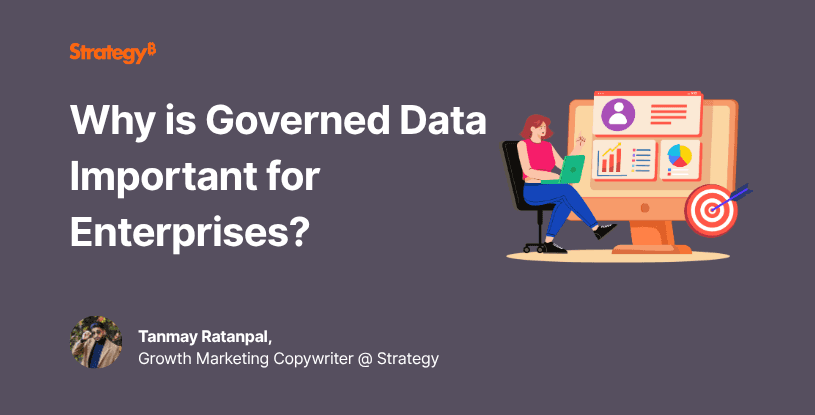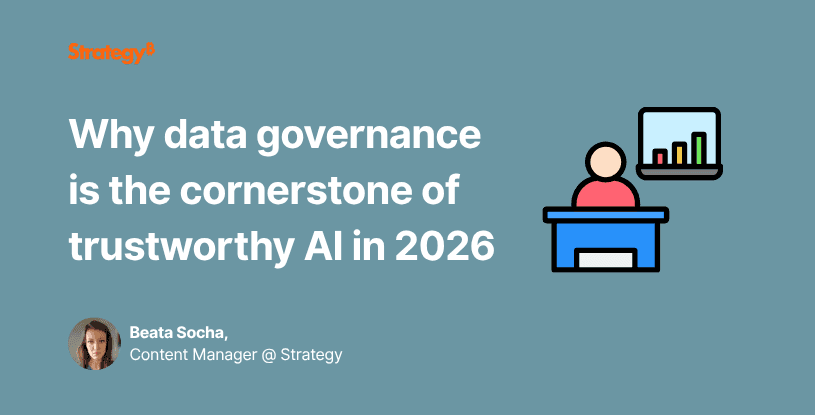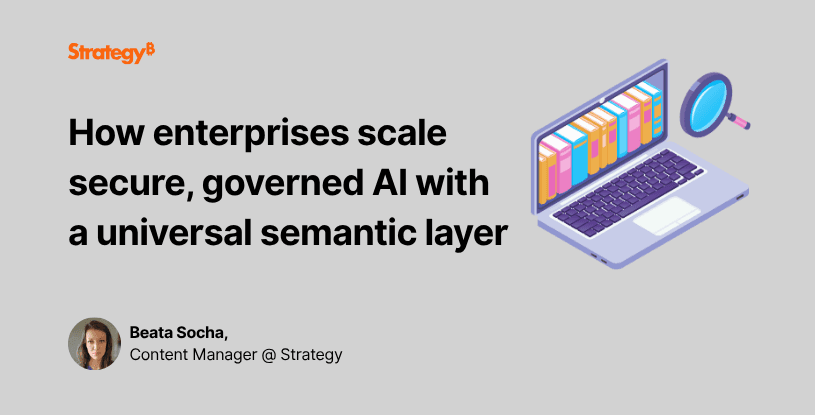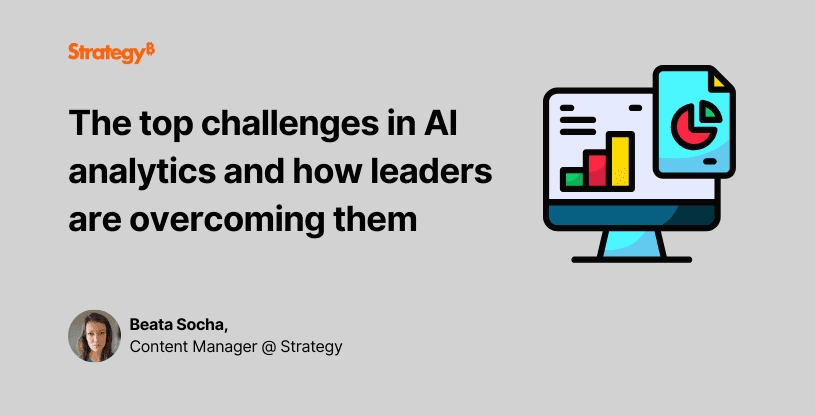How to maximize the value of AI-powered analytics at scale
The conversation around AI has often been about potential, but the newest research reveals a shift: companies are moving past speculation and seeing tangible results in cost savings, productivity, and faster decision-making. See how AI-powered analytics is creating measurable value and delivering consistent business impact.
The value of AI-powered analytics
The AI+BI Global 2025 Report shows that 61.7% of organizations confirm a moderate to significant positive impact from their AI analytics initiatives. When asked where AI analytics delivers results, organizations highlighted improvement across teams and functions, including:
Increased employee productivity (53.6%)
Cost savings (48.9%)
Faster decision-making and innovation (48.1%)
Higher customer satisfaction (46.8%)
Competitive advantage (42.6%)
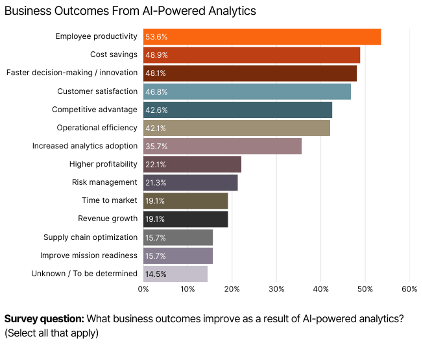
Organizations are acutely aware of the long-term advantage that AI analytics provides, from improving efficiency to strengthening customer experience. They’re not just testing AI—they’re investing in it.
However, the real challenge is maximizing that investment.
Setting SMART goals for AI-powered analytics
One of the biggest challenges organizations face is justifying their investment in new technologies.
A shrewd investment can return tenfold, but a hasty one can cause long-term strategic and reputational damage. Therefore, organizations must proceed with a deliberate plan before investing in AI.
The report emphasizes the importance of linking AI-powered analytics to SMART goals—specific, measurable, achievable, relevant, and time-bound. Instead of vague promises, leaders should define the tangible outcomes they want to achieve from each initiative.
Examples include:
- Increase productivity in customer support by 15% within six months by automating ticket triage.
- Achieve $50 million in annual supply chain savings by FY2025 using AI analytics to eliminate waste.
- Cut strategic decision-making time in product planning by 30% by Q4 2025 through predictive dashboards.
By setting measurable goals, leaders can both track progress and demonstrate ROI to stakeholders.
“For AI-powered analytics to scale meaningfully, systems must meet users where they are—not expect users to become data engineers.”
— Brett Sheppard, report author, The State of AI+BI Analytics Global 2025 Report
Where to deploy AI analytics
A crucial factor in the success of AI analytics is its correct application.
For example, the AI+BI Global 2025 Report highlights the following adoption curve: early adopters are reporting the most significant results, mainstream users are seeing steady moderate gains, and late adopters are just beginning to experience measurable impact.
The curve presents a clear path from initial investment to long-term value—provided organizations stay focused on the outcomes that matter most.
One of the report’s featured insights comes from Johnson & Johnson, which reviewed 900 potential AI use cases and found that just 10–15% of them drove 80% of the total economic value.
This underscores the bottom line: by focusing on the most impactful use cases, organizations can accelerate adoption and maximize ROI.
See how other industry leaders, including Deloitte, McKinsey, and Accenture, are driving business outcomes and maximizing AI analytics adoption—at scale.
Departmental impact
Another crucial factor is how broadly AI’s business value extends across departments.
Modern organizations tend to invest in AI-powered solutions that lower the barrier to entry for all employees—from data experts to frontline workers. The lower the complexity, the wider the adoption.
In fact, the report highlights strong AI analytics adoption across multiple departments:
- Data science (46.0%)
- IT and technology (45.5%)
- Customer support (45.1%)
- Executive leadership (42.1%)
- Finance and operations (41.7%)
This distribution shows that AI-powered analytics is no longer confined to technical teams—it’s shaping strategy, operations, and even real-time customer experiences.
What’s next for leaders?
AI-powered analytics is proving its worth. With more than 60% of organizations reporting positive impact, the question is no longer if AI analytics delivers value—but how quickly leaders can scale it to capture maximum advantage.
So how can leaders maximize the value of AI-powered analytics across departments, regions, and projects?
It starts by aligning business outcomes with competitive positioning.
Organizations that invest in AI-powered analytics are not just improving efficiency—they’re building long-term strategic advantage around clearly defined objectives.
Discover the insights, frameworks, and best practices leaders are applying to maximize the value of AI-powered analytics and deliver real-time business impact in the State of AI+BI Analytics Global 2025 Report.

